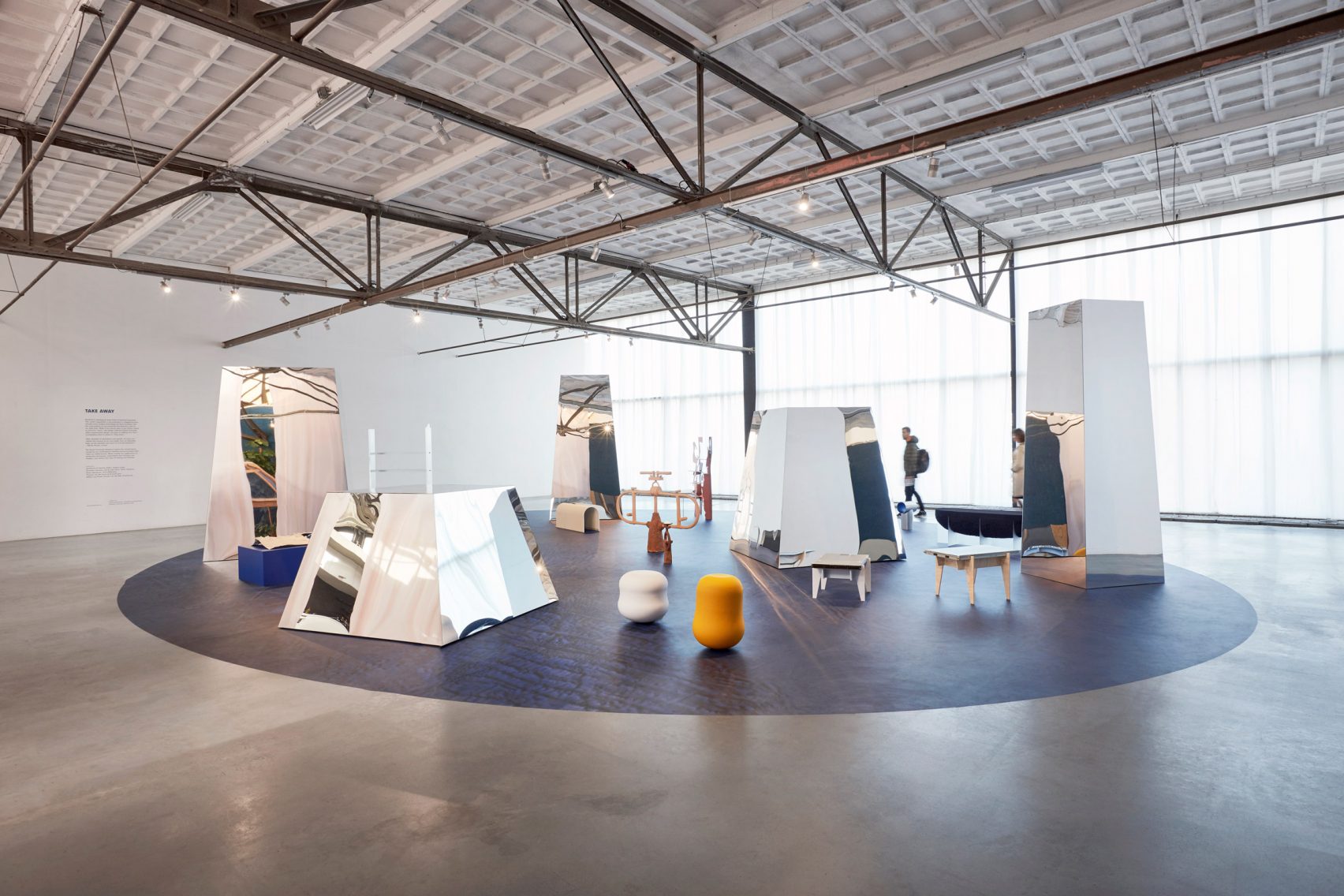Dutch Invertuals' ‘Take Away’ show marked the studio’s tenth appearance at the annual design week.
Launched back in 1998, Dutch Design Week has earned a reputation as one of the most experimental festivals on the circuit, and the 17th edition took place in Eindhoven last week. The theme of this year's event was ‘If not us, then who?’ focusing on the role of design in combatting global issues, and designers responded by showcasing a range of different ideas, from practical solutions to radical innovations.
As part of the week-long program, locally-based design studio Dutch Invertuals curated an exhibition of 10 objects, each produced by a different designer or studio, to question whether it’s possible to reduce the volume of non-essential products in our lives. Touching on themes including overconsumption, digitalization and the disappearance of craft, the experimental projects, collectively entitled ‘Take Away’, included new applications of production techniques, new insights, and new ways of making and thinking.
Featuring a range of unusual products, from lamps made from old clothes, to altars constructed from unwanted household junk, the exhibition was one of architecture and design magazine Dezeen’s Top 10 Dutch Design Week Highlights, and here are six of our favorite designers and their projects…
Stine Mikkelsen
Copenhagen-based material researcher and manipulator Stine Mikkelsen presented her Guilt.less lamps made from unwanted clothes to highlight the environmental damage being caused by the fashion industry. She hopes that they will help people to realize that the responsibility lies with the consumer and not just the industry itself. "I want people to reflect on their own consumption habits, and through this realize that every time we buy a piece of clothing it also involves an inherent political position," explained the designer.
Christian Hammer Juhl and Jade Chan
A response to concerns about how digitalization impacts physical activity, Christian Hammer Juhl and Jade Chan’s Wobble Stools are designed to encourage movement and play. "Technology expands our overall mobility, yet it takes over functions that formerly demanded physical effort from us," the designers explained. "We can increasingly control and interact with our environment with only minimal movements, using our fingers, gesture, gaze, voice and even facial expression. Movement became a choice."
Willem Van Hooff
A graduate of Eindhoven’s Design Academy, Willem Van Hooff created a series of altars using unwanted household junk to reflect on society's obsession with possessing material objects. "By creating ‘Prayers to Obsession’ that expose non-essential stuff that we keep in our homes, I hope the audience will become more aware of their true needs," said Van Hooff.
Onno Adriaanse
With a reputation for producing extraordinary pieces of furniture, Onno Adriaanse created his Cork Bench to highlight the role of craft now that machines are increasingly involved in the creative process. Shaped by removing material from a rectangular block of foam, the monolithic bench involved the process of sculpting, embracing unpredictability and intuition. "Without involving machines, I tore off parts bit by bit, leaving my choices visible and discovering the bench's final shape," said Adriaanse. "In this way, every bench becomes a unique object that appears to levitate thanks to its transparent support structure."
ZwartFrame
ZwartFrame's Arches made from plaster are the result of the Utrecht-based design collective's quest to find new and unexpected applications for what is a fully recyclable material. By using it to make one of the oldest and strongest constructive forms, the sculptures manage to use as little of the material as possible. "Being widely used for the coatings of walls and ceilings, plaster requires a hidden supporting framework," said the collective. "While it is not known as a strong material, we demonstrate with Arches its unexpected load-bearing properties."
Xandra Van Der Eijk
Award-winning designer Xandra Van Der Eijk created 3D prints of a receding glacier using a laptop, tablet, 3D scanner and phone with 4G signal, technologies that are associated with climate change. "The journey, the risk, the awe, the act of documenting and reproducing, all can be seen as a ritual for dealing with my own ecological grief," said Van der Eijk. "I longed to witness, preserve, and archive this fast disappearing phenomenon that has forever shaped our world."
Related Reading:
São Paulo Fashion Week’s Conscious Creatives
Anthropocene: Documenting Man’s Impact On The Planet








